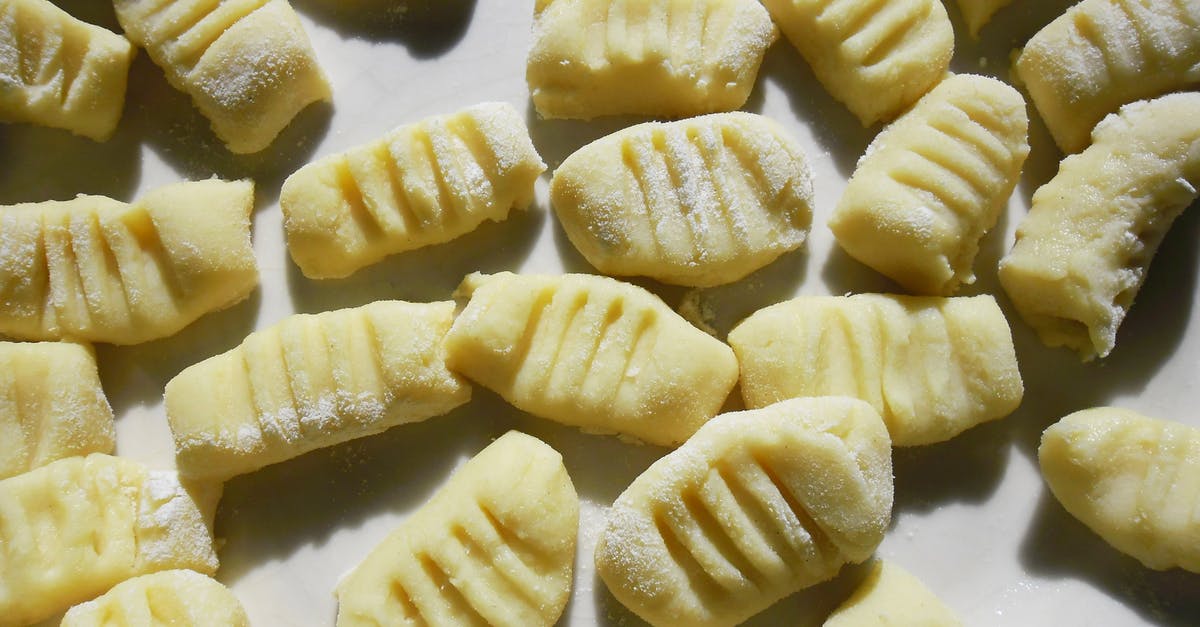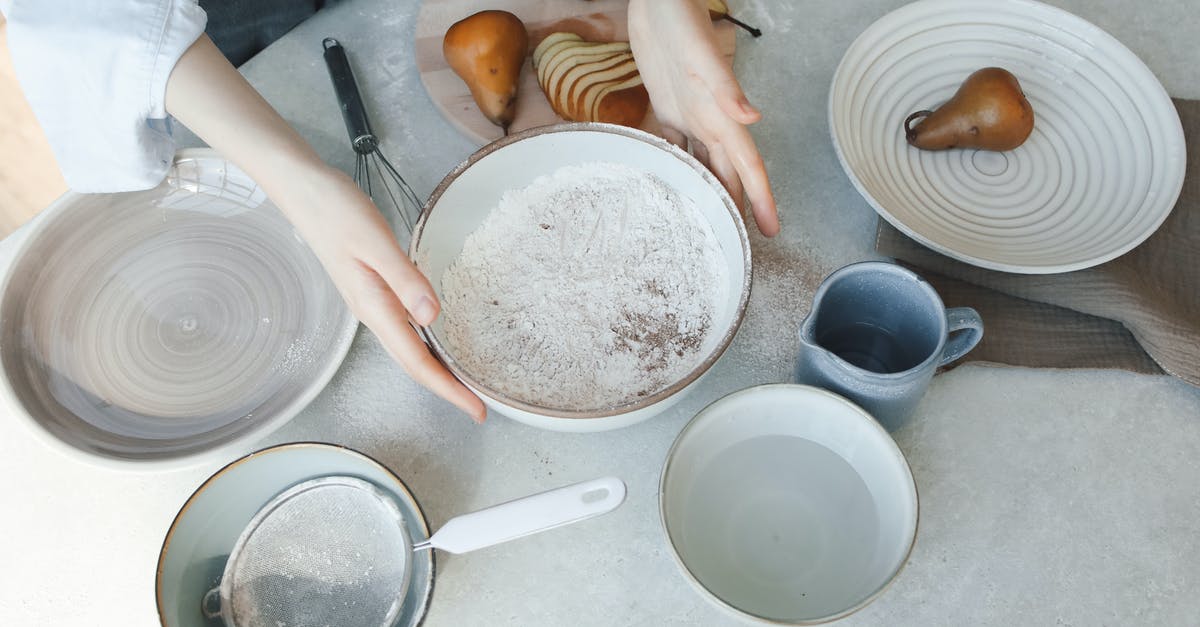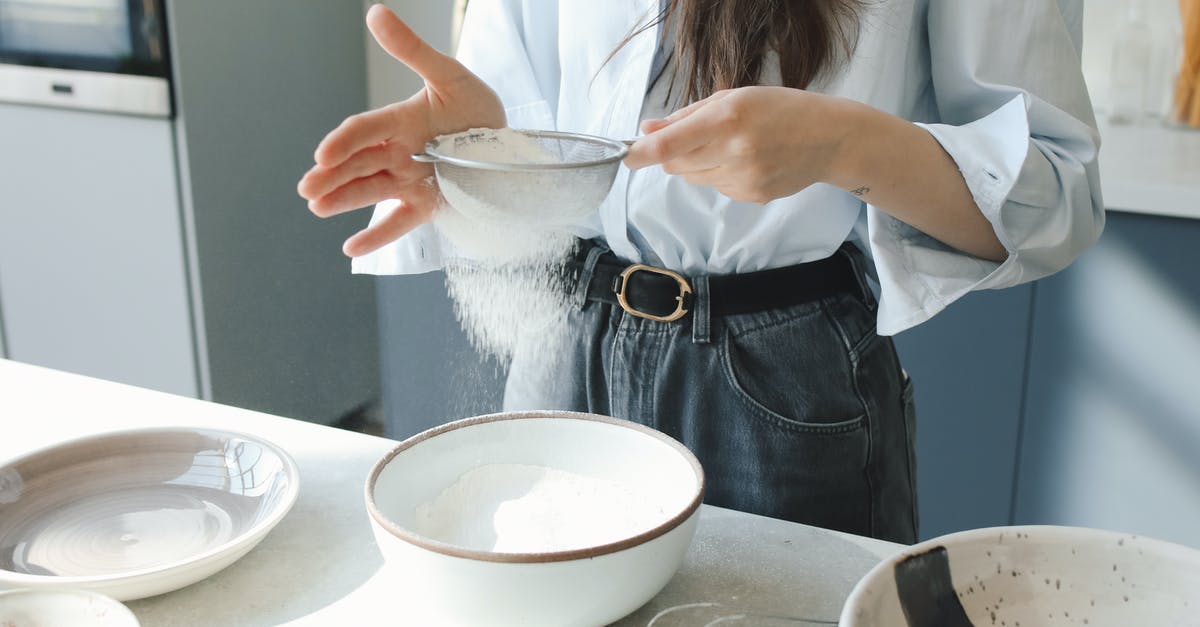Flour in the roux

There are a great many questions here about roux. This is about the best ratio of flour to butter (fat), and also whether the type of flour (protein content) affects this ratio.
Let me explain. Roux is a thickening agent. The less you have to use, the less fat you ingest. I've seen recipes ranging from 1:1 flour to butter to 1,6:1 flour to butter. That is 60% more flour than butter!
I'm also wondering if the type of flour affects the efficiency of the roux. More proteins (gluten) means higher thickening power (or not), or does it not have any effect?
I've read that heating the roux until it's darker than golden brown will reduce it's thickening power. Is that true?
Best Answer
According to On Food and Cooking by Harold McGee, roux functions as a thickener due the starches in the flour swelling up and interfering with the flow of water.
In fact, he indicates that technique can be used with any starch and any fat.
This implies that a lower-protein flour (which implies higher starch, weight per weight) like soft summer wheat, or a cake flour will make a more effective roux.
As an aside: roux can be made with oil instead of butter. As we know oil contains no water, and gluten only forms in the presence of water, we know that roux functions without gluten, as there can be no gluten development in an oil-based roux.
McGee explains that cooking the roux initially increases its thickening power by cross-connecting some of the starches. However, as browning occurs, the maillard reactions are transforming starches and proteins into other molecules, and reducing the ability of the roux to thicken.
So yes, it is true that the darker the roux, the less thickening power it has.
In New Orleans style gumbos, for example, the roux is so dark (almost a mahogony color) that it adds no thickening power at all to the stew—it is there for the flavor. The thickening in that dish comes from (depending on the tradition followed) either file powder or ochra, or both (not considered traditional).
I was not able to determine an ideal ratio of flour to fat. McGee indicates that a 1:1 ratio is traditional. However, if that fat is butter, about 20% of it is water, so that really does leave more flour than fat after the water evaporates. In any case, as long as there is sufficient fat for the roux to be cooked smoothly, it will work fine. Additionally, the fat in the roux is also indirectly an ingredient in the finished dish, so it might be desirable in its own right, depending on the outcome.
Pictures about "Flour in the roux"



What does flour do in a roux?
Roux (/\u02c8ru\u02d0/) is flour and fat cooked together and used to thicken sauces. Roux is typically made from equal parts of flour and fat by weight. The flour is added to the melted fat or oil on the stove top, blended until smooth, and cooked to the desired level of brownness.Can you add flour to roux?
All roux starts with a white roux\u2014cooking the roux just long enough to eliminate the taste of raw flour. In a small saucepan, melt the butter (or oil) over medium heat. Add the flour, salt and pepper and stir until combined. Cook, stirring frequently, for 2 minutes, until the mixture is bubbly and foamy.What type of flour is used in a roux?
Flour: always use plain white flour. Self-raising flour has raising agent in and will leave your finished sauce with a slight taste of bicarb.How much flour goes in a roux?
1 Tbsp. flour mixed with 1 Tbsp. of butter or other fat should yield enough roux to thicken 3/4 to 1 cup of warm liquid. To avoid lumps forming, slowing whisk liquid into the roux and simmer until mixture thickens.Roux Recipe - How to Make Roux
Sources: Stack Exchange - This article follows the attribution requirements of Stack Exchange and is licensed under CC BY-SA 3.0.
Images: Erna Daalman, Polina Tankilevitch, Polina Tankilevitch, Andrea Piacquadio
